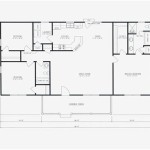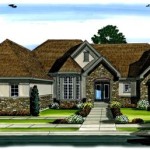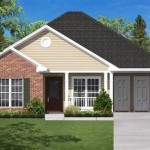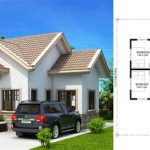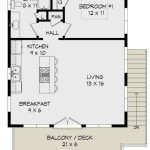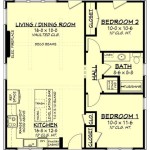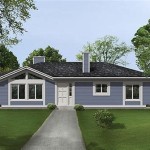Floor Plans For 2 Story Homes With Basement
The integration of a basement into a two-story home design presents a multifaceted opportunity for homeowners. It allows for the maximization of living space on a given footprint, offers potential for increased property value, and provides flexibility in adapting the home to various lifestyle needs. Analyzing floor plans for two-story homes with basements necessitates a thorough understanding of structural considerations, functional requirements, and building code regulations.
The purpose of this article is to explore various aspects of floor plans for two-story homes incorporating basements. We will delve into different layout options, discuss the optimal utilization of space, and highlight essential considerations for ensuring the design is both practical and aesthetically pleasing. Factors such as natural light, accessibility, and the integration of mechanical systems will also be addressed.
Optimizing Space Utilization
One of the primary advantages of incorporating a basement into a two-story home is the potential for significantly increased usable space. The design of the basement floor plan should complement the layout of the main floors, creating a cohesive and functional living environment. Common uses for basement space include recreational rooms, home theaters, guest suites, home offices, gyms, and storage areas. The specific function of the basement space will directly influence the floor plan and the placement of key elements such as egress windows, staircases, and utility rooms.
Careful consideration should be given to the placement of the staircase leading to the basement. Ideally, the staircase should be located in a central area of the main floor to provide convenient access from various parts of the house. The design of the staircase itself can also impact the overall aesthetic of the home. An open staircase can create a more spacious and airy feel, while a closed staircase offers increased sound insulation and privacy.
Natural light is a crucial element in any living space, and basements often present a challenge in this regard. The inclusion of appropriately sized and positioned egress windows is essential, not only for safety but also for providing natural light and ventilation. Egress windows must meet specific size requirements as dictated by local building codes, ensuring they can be used as an escape route in case of an emergency. Window wells can be used to maximize the amount of light entering the basement and can also improve the aesthetic appeal of the exterior.
The layout of the basement should also consider the placement of utility rooms, including the furnace, water heater, and electrical panel. These areas should be easily accessible for maintenance and repairs but should also be located in a discreet area of the basement to minimize noise and visual clutter. Soundproofing measures can be implemented to further reduce noise transmission from these areas to the rest of the house.
Storage is another important consideration in basement design. Built-in storage solutions, such as shelving and cabinets, can help to maximize space and keep the basement organized. Dedicated storage areas can be designated for seasonal items, holiday decorations, and other infrequently used belongings. Proper ventilation is essential in storage areas to prevent moisture buildup and mold growth.
Structural and Engineering Considerations
The structural integrity of a two-story home with a basement is paramount, and the floor plan must be designed in accordance with sound engineering principles. The foundation walls must be capable of withstanding the lateral pressure from the surrounding soil, and the basement floor must be properly reinforced to prevent cracking and settling. A qualified structural engineer should be consulted during the design process to ensure that the home is structurally sound and meets all applicable building codes.
Waterproofing is another critical consideration in basement construction. Proper drainage systems, including perimeter drains and sump pumps, are essential for preventing water from entering the basement. The foundation walls should be coated with a waterproof membrane to prevent moisture penetration. Adequate ventilation is also important for controlling humidity levels and preventing mold growth.
The type of soil surrounding the foundation can significantly impact the design and construction of the basement. Expansive soils, which swell and shrink with changes in moisture content, can exert significant pressure on the foundation walls. In areas with expansive soils, special design considerations may be necessary, such as the use of reinforced concrete foundations or the installation of a French drain system.
The floor plan should also consider the placement of load-bearing walls and columns in the basement. These structural elements provide support for the floors above and must be properly designed and constructed to ensure the stability of the home. The location of these elements should be carefully coordinated with the layout of the main floors to minimize impact on the overall design.
Local building codes and regulations will dictate specific requirements for basement construction, including minimum ceiling heights, egress window sizes, and fire safety measures. It is essential to consult with local building officials to ensure that the floor plan complies with all applicable codes and regulations. Failure to comply with building codes can result in costly delays and rework during the construction process.
Design Variations and Layout Options
The floor plan for a two-story home with a basement can be customized to suit the specific needs and preferences of the homeowner. Numerous design variations and layout options are available, allowing for a wide range of possibilities. Some common layout options include open-concept designs, traditional layouts with defined rooms, and hybrid designs that combine elements of both.
An open-concept basement floor plan typically features a large, open space that can be used for a variety of purposes, such as a recreational room, home theater, or gym. This type of layout is ideal for homeowners who prefer a flexible and adaptable living space. The open space can be further divided using furniture or partial walls to create distinct zones for different activities.
A traditional basement floor plan typically features defined rooms, such as a guest suite, home office, or storage area. This type of layout is ideal for homeowners who prefer a more structured and compartmentalized living space. The defined rooms offer increased privacy and can be tailored to specific functions.
A hybrid basement floor plan combines elements of both open-concept and traditional layouts. This type of layout typically features a large, open space that is complemented by several defined rooms. The open space can be used for recreational activities, while the defined rooms can be used for more private functions, such as sleeping or working.
The design of the basement floor plan should also consider the overall aesthetic of the home. The basement can be designed to complement the style of the main floors, or it can be designed to have its own unique character. Factors such as lighting, flooring, and wall finishes can all contribute to the overall aesthetic of the basement.
The integration of a walk-out basement can significantly enhance the functionality and aesthetic appeal of the home. A walk-out basement features a door or sliding glass door that leads directly to the outside, providing easy access to the backyard or patio. This type of basement is ideal for homes located on sloping lots and can significantly increase the amount of natural light entering the basement.
The layout of the basement should also consider the placement of plumbing fixtures, such as bathrooms and wet bars. These fixtures require access to water supply and drainage lines, and their placement should be carefully coordinated with the location of existing plumbing lines. The installation of a basement bathroom can significantly increase the convenience and functionality of the basement space.
The design of the basement floor plan should also consider the potential for future expansion or renovation. The basement can be designed to accommodate future additions, such as a home theater or a guest suite. Provisions can be made for future plumbing and electrical connections, making it easier to add these features at a later date.
Accessibility is another important consideration in basement design. The floor plan should be designed to accommodate individuals with disabilities, ensuring that they can easily access and navigate the basement space. Features such as ramps, wider doorways, and accessible bathrooms can be incorporated to improve accessibility.
Ultimately, the best floor plan for a two-story home with a basement will depend on the specific needs and preferences of the homeowner. By carefully considering these factors and working with a qualified architect or designer, homeowners can create a functional and aesthetically pleasing basement that enhances the overall value and livability of their home.

Stylish And Smart 2 Story House Plans With Basements Houseplans Blog Com

Stylish And Smart 2 Story House Plans With Basements Houseplans Blog Com

Stylish And Smart 2 Story House Plans With Basements Houseplans Blog Com

Stylish And Smart 2 Story House Plans With Basements Houseplans Blog Com

Stylish And Smart 2 Story House Plans With Basements Houseplans Blog Com

House Plans With Basements Dfd Blog

1500 Sq Ft Home Plans Rtm And Onsite In 2024 Basement House Small Best

Stylish And Smart 2 Story House Plans With Basements Houseplans Blog Com

Ranch House Plans Traditional Floor

Small Cottage Plan With Walkout Basement Floor

